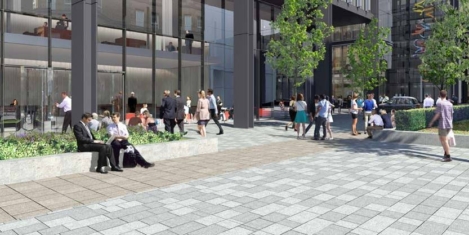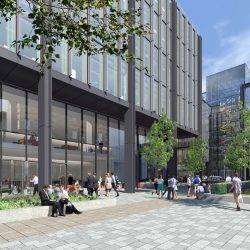December 20, 2016
Demand for Bristol offices driven by TMT, professional and energy occupiers 0
A rise in the cost of renting commercial property in Bristol is being driven by increased demand from TMT, professional and energy occupiers looking for office space in the city, with take up levels of Bristol city centre offices predicted to reach 800,000 sq ft (74,322 sq m) in 2016. This is 50 percent above the five year average of 533,000 sq ft (49,517 sq m), according to Savills. This influx has resulted in a significant decrease in the supply of city centre Grade A stock, with levels currently at 117,116 sq ft (10,880 sq m). In order to cope with the demand landlords, particularly those with TMT tenants are refurbishing their offices, with the refurbishment/redevelopment pipeline at an estimated 300,000 sq ft (27,871 sq m). Savills notes that as a result of increased demand rental growth has been seen in both Grade A and B stock in Bristol. Refurbished office space is now reaching rents of £27 per sq ft (£291 per sq m) in Grade B stock, just below the headline rent of £28.50 per sq ft (£307 per sq m). It is predicted that in 2017 rents on Grade A space will reach and exceed £30 per sq ft (£323 per sq m).

































November 25, 2016
Workplace professionals should look to the consumer sector for boosting engagement 0
by Jeff Flanagan • Comment, Facilities management, Workplace, Workplace design
More and more businesses are recognising the power of the workplace experience to drive employee performance and engagement. Global brand Airbnb, for example, has now renamed its head of human resources as “chief employee experience officer.” This is good news for workplace design and management professionals. We are well placed to capitalise on this shift in business opinion, but if we want to make a tangible impact, we need to bring practical solutions to the table. First and foremost, these need to be backed up by research. There have been few studies specifically into what makes a healthy and productive work environment. However, there are a number of research projects that examine how a human being’s surroundings impact their mood and behaviour, and in particular how consumer environments shape customers’ perception of and engagement with a brand. As workplace professionals, we can learn a great deal from this consumer research and this is why workplace design and management teams should look towards consumer-facing industries for inspiration.
More →